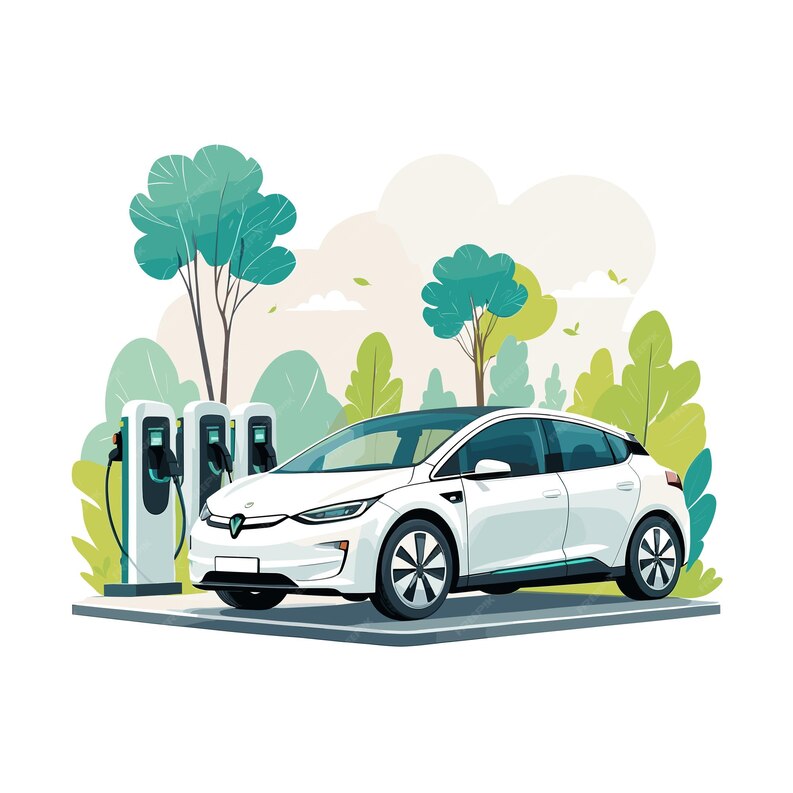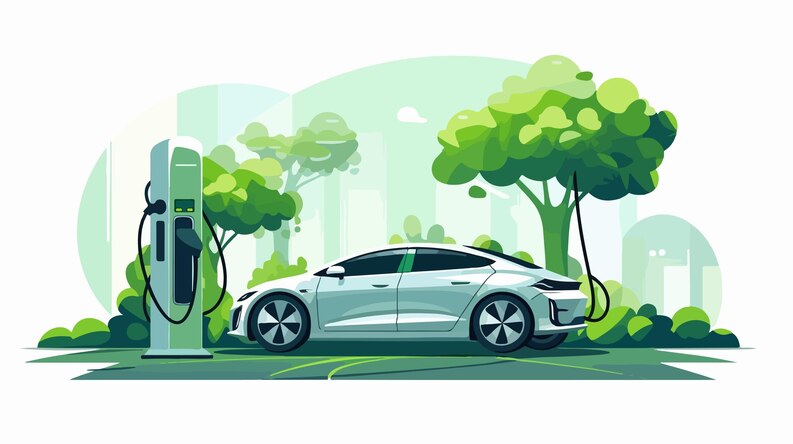Picture this: You’ve just driven off the lot in your shiny new electric vehicle (EV), buzzing with excitement about your eco-friendly ride. The future
Picture this: You’ve just driven off the lot in your shiny new electric vehicle (EV), buzzing with excitement about your eco-friendly ride. The future feels bright, and you’re ready to embrace sustainable driving. But then, a few weeks in, you’re scratching your head over a drained battery, a confusing charging station experience, or a nagging worry about range anxiety. Don’t worry—you’re not alone! The EV learning curve can be steep, but it’s entirely conquerable. In this guide, we’ll dive into the top 5 mistakes new EV owners make and share practical electric vehicle tips to help you glide into smart EV ownership with confidence. Whether you’re a first-time car buyer, a daily commuter, or an electric vehicle enthusiast, these insights will keep you charged up and ready to roll.
 1. Underestimating Range Anxiety and Poor Trip Planning
1. Underestimating Range Anxiety and Poor Trip Planning
One of the most common EV mistakes is letting range anxiety—that fear of running out of juice mid-journey—take the wheel. Many new EV owners assume their car’s stated range (say, 250 miles) is a guarantee, but real-world factors like weather, driving habits, and cargo weight can shave off miles. For example, blasting the AC on a hot day or speeding down the highway can reduce your range by up to 20%, according to studies by the American Automobile Association (AAA).
How to Avoid It: Plan your trips like a pro! Use apps like PlugShare or A Better Routeplanner to map out charging stations along your route. Before a long drive, check your battery level and aim to keep it above 20% to avoid stress. Hypothetically, if Sarah, a new EV owner, plans a 200-mile road trip without checking for chargers, she might end up stranded. Instead, she could plot a stop at a fast-charging station halfway, grabbing a coffee while her car juices up in 20-30 minutes. Embrace EV efficiency by driving smoothly—avoid rapid acceleration and maintain steady speeds.
2. Ignoring Proper EV Charging Habits
Charging an EV isn’t like filling a gas tank; it’s a lifestyle shift. A frequent mistake is relying solely on fast chargers or waiting until the battery is nearly empty before plugging in. This can degrade your battery over time and leave you scrambling for a charger. According to a 2023 study by Battery University, consistently draining lithium-ion batteries below 10% can reduce their lifespan by up to 15%.
How to Avoid It: Adopt smart charging habits. Aim to keep your battery between 20% and 80% for daily use, as this range optimizes battery care. Invest in a Level 2 home charger for overnight charging—it’s faster and more cost-effective than public stations. For instance, imagine commuter Jake, who only charges his EV at fast stations during lunch breaks. By installing a home charger, he could save $200 annually on charging costs and extend his battery’s life. Schedule charging during off-peak hours (like late at night) to save on electricity rates and support green transportation by reducing grid strain.
3. Neglecting EV Maintenance (Yes, It’s Still a Thing!)
Many new EV owners assume electric vehicles are maintenance-free because they lack engines and oil changes. While EVs require less upkeep than gas cars, ignoring EV maintenance can lead to costly repairs. For example, neglecting tire rotations or brake checks can reduce EV efficiency and safety, as EVs are heavier due to their batteries.
How to Avoid It: Treat your EV like any other car when it comes to basic care. Rotate tires every 6,000-8,000 miles to ensure even wear, check brake fluid regularly, and keep an eye on your cooling system, which regulates the battery’s temperature. A 2024 Consumer Reports study found that EV owners who followed recommended maintenance schedules saved 50% on repair costs compared to those who didn’t. Think of Lisa, an urban driver who skipped tire rotations. Her uneven tire wear cut her range by 5%, forcing her to charge more often. Stay proactive with electric car advice from your manufacturer’s manual to keep your ride smooth and efficient.
4. Overlooking Battery Care in Extreme Weather
Extreme temperatures—whether scorching summers or freezing winters—can wreak havoc on your EV’s battery. A common EV mistake is parking your car in direct sunlight or leaving it unplugged in subzero conditions without preconditioning. According to the U.S. Department of Energy, cold weather can reduce EV range by up to 40%, while excessive heat can accelerate battery degradation.
How to Avoid It: Protect your battery with simple habits. In winter, precondition your EV (warm it up while plugged in) to preserve range. In summer, park in the shade or a garage to keep the battery cool. For example, eco-conscious driver Mia noticed her range dropped during a Chicago winter. By preconditioning her car via its app before leaving, she saved 10-15 miles of range per commute. Monitor your battery’s health through your EV’s dashboard and avoid frequent fast charging in extreme heat to ensure long-term battery care. These steps make sustainable driving easier and more reliable.
5. Misjudging the Total Cost of Smart EV Ownership
Many first-time car buyers and new EV owners focus solely on the sticker price or fuel savings, overlooking other costs like insurance, home charger installation, or public charging fees. A 2024 Kelley Blue Book report noted that while EVs save an average of $1,500 annually on fuel, unexpected costs like higher insurance premiums (due to pricier repairs) can catch owners off guard.
How to Avoid It: Budget holistically for smart EV ownership. Research insurance rates for EVs—some providers offer discounts for electric cars. Factor in the cost of a home charger (around $500-$1,500, including installation) and check for local rebates or tax credits. For instance, tech-savvy commuter Raj saved $750 on his charger through a state incentive program. Compare public charging costs and prioritize home charging to maximize savings. By planning ahead, you’ll avoid EV errors and enjoy the financial perks of green transportation.
Conclusion: Charge Into EV Ownership with Confidence
Transitioning to an electric vehicle is a thrilling step toward sustainable driving, but it comes with its share of pitfalls. By steering clear of these top 5 mistakes—underestimating range anxiety, neglecting charging habits, skipping EV maintenance, ignoring battery care, and misjudging costs—you’ll set yourself up for a smoother, greener ride. Whether you’re an eco-conscious driver, a daily commuter, or an automotive blogger, these electric vehicle tips will help you master the EV learning curve and embrace smart EV ownership.
Ready to hit the road? Share your own EV mistakes or tips in the comments below, or connect with fellow electric vehicle enthusiasts on social media to keep the conversation going. Let’s power up for a future of green transportation—one charge at a time!

COMMENTS